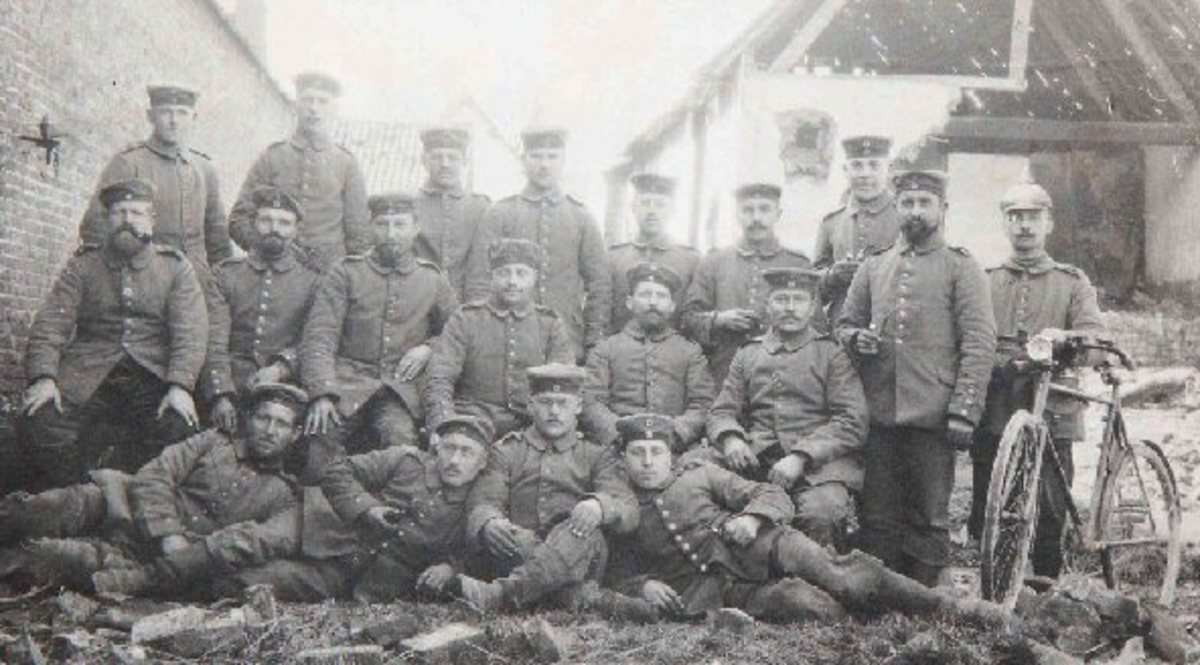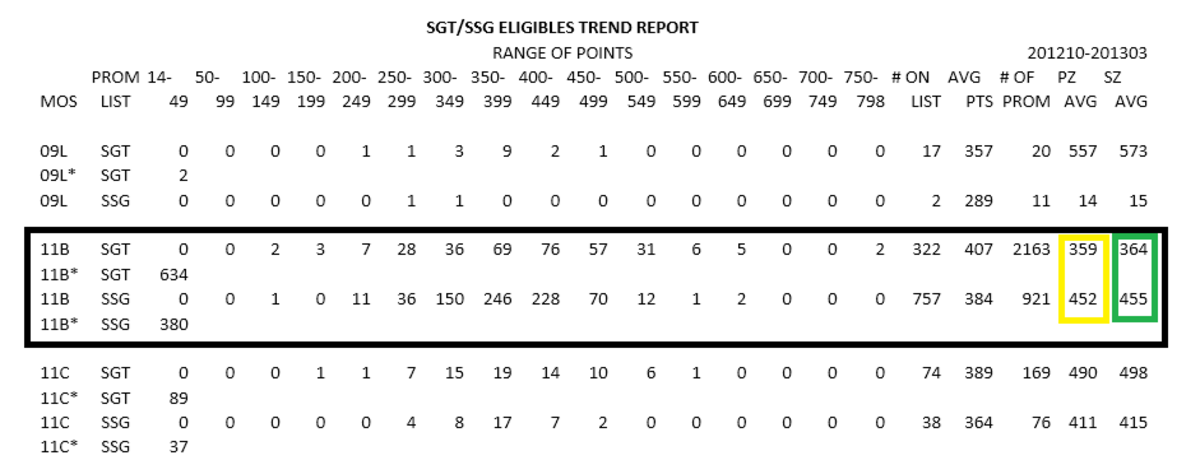Coconuts Saved Many Lives During Gas Attacks in World War I

HOW THE COCONUT SAVED MANY LIVES AND CAN HELP SAVE YOURS!
Many people do not realize how the coconut was one of the best defenses used by the United States forces in World War I. People in the United States were encouraged to use coconuts in many recipes so that the shell could be sent to Europe or two gas mask factories during production. This website explains the use of coconut during World War I to help protect our forces. Who knows? Many of us may not be here today if this had not occurred during World War I.
This website also contains helpful and healthful information regarding the coconut and its uses today and may also have a few recipe surprises from the past. There is also some fun stuff including trivia and quizzes surrounding the coconut. We hope you enjoy it!
Photos used in the website are Pre-1923 and from the Public Domain or cited using Creative Commons
LIME IN THE COCONUT (SOUNDTRACK FOR YOUR VISIT) - BY THE LATE GREAT HARRY NILSSON

WHY COCONUT SHELLS & WHY WERE MASKS USED?
Since the early 1800s, activated carbon from coconut shells has been used as a filtering material. Activated carbon can also be produced from a variety of other materials including nut shells, fruit pits, wood and coal. It was discovered to be an excellent filtering material for gas masks during World War I. It really wasn't discovered by accident as it had been used for over 100 years. Use continued for gas masks into World War II and even into the present time where there is still a threat of either hostile attack or in areas where masks are needed for any types of protection. Coconuts and other shell-based carbons were the only plentiful source of granular carbons available in North America. Obviously, Coconuts were larger and produced more carbon than any other nut materials. Because of the German gas attacks and World War I, coconut usage was encouraged so that the carbon could be used for insertion into gas masks. During World War II and fear of attack from foreign enemies, many people in the United States constructed homemade gas masks from household items such as tin cans, charcoal and even one set of plans from 1942 shows the use of a snorkel to help make a gas mask.
"...there's pineapple shrimp and lemon shrimp, coconut shrimp...that that's about it."
Bubba Gump
COCONUT USAGE AD FROM 1918
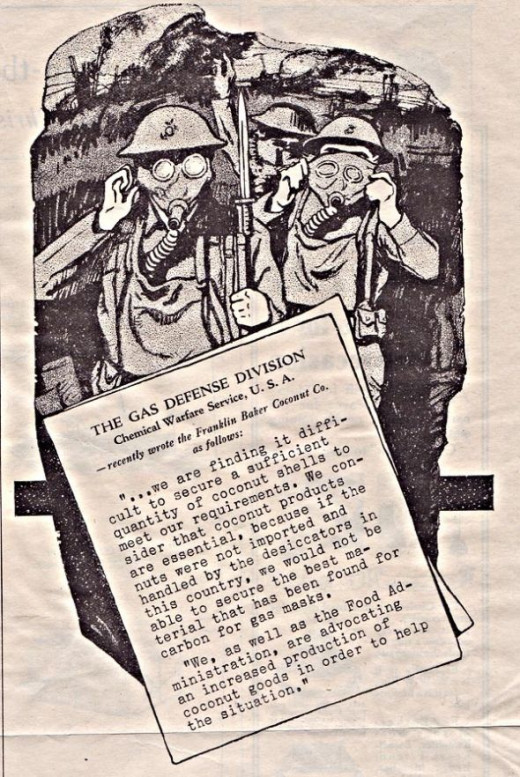
This ad is from a 1918 designer magazine that was read by women across the United States. Ads such as these were inserted into many publications across the United States during World War I by the Franklin Baker Company in Philadelphia, Pennsylvania. It pleads for the usage of coconuts in order that the shells can be used for carbon for gas masks. This that would surely hit home when you see this depiction of soldiers almost pleadingly asking for your help while wearing their masks. Notice that the bayonet is affixed which lets you know that these soldiers are not just sitting around, but are in combat and need your help.

FACTS THAT YOU MAY NOT KNOW ABOUT POISON GAS ATTACKS IN WORLD WAR I
Most people think that the first use of poison gas in combat was by the Germans in World War I. This is not true as the first use of poison gas in a recorded gas attack was by the French in 1914 in which they used poisonous gas in tear gas grenades. The gas that was used was not lethal but the French used this gas in desperation to try to stop the advancing German army from invading Belgium and northeastern France. It was against the rules of war and although the Germans had not yet decided to use gas, they had been thinking about it as a way to inflict major defeat on their enemy. Later in 1914 the Germans used gas shells that were filled with a chemical that caused extreme sneezing. In this instance, the Germans did not have the intention to kill the enemy but to incapacitate them so that they could not defend their positions. Poison chlorine gas was first used by the Germans in 1915. The French noticed a green cloud moving towards them and thought it was just a smokescreen that was intended to hide advancing German troops. When this cloud of smoke was discovered, and because the French thought that the Germans were advancing, they were ordered into their trenches. This gas attack was devastating in the French with their allies fled in complete terror. Allied nations responded and started using poison gas in 1915. One of the major drawbacks to using gas in battle was the wind. You may launch a large gas attack and then find it coming right back at you. Contrary to modern thought, fatalities due to gas attacks were relatively small. However, thousands of men died from gas related injuries many years after the war and many that did not die, had disabling injuries that were so severe that they could not work.
ANOTHER AD FROM 1918 REQUESTING THAT MANY COCONUTS BE USED IN THE USA
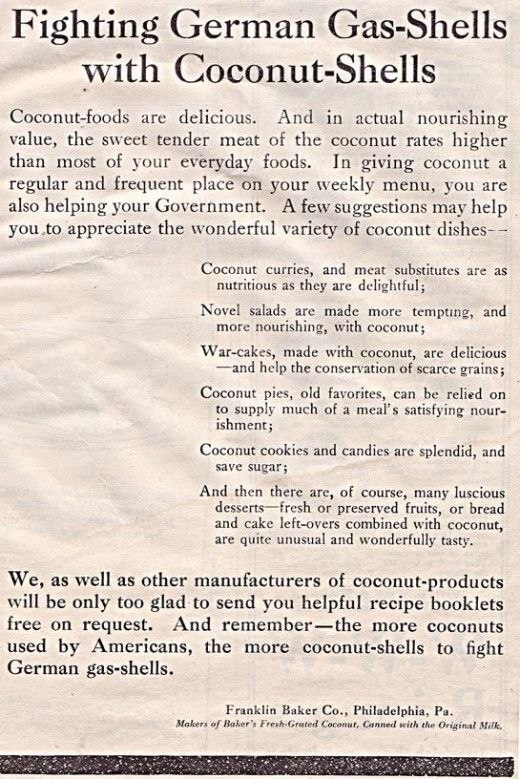
This is another article sponsored by the Franklin Baker Company in Philadelphia Pennsylvania, that talks about how nourishing and delicious coconuts are so that they can be incorporated into everyone's weekly menu. Frequent usage is requested so that the shells can be sent for use in gas masks against German gas shells. It even mentions that recipe booklets will be mailed to you upon request so you can increase your usage of coconut in your daily meals.
"I have a wild bunch of coconuts!"
Benny Hill
DUCK! COOL COCONUT PRODUCTS FROM AMAZON!
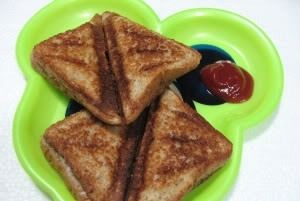
Cook Time
Prep Time: 10
Total Time: 20
Serves: 2
Ingredients
- Bread slices (brown/white) 8
- Fresh grated coconut 2 cups
- Green chilli paste 1 tsp
- Salt as per taste
- Cheese grated 2 tbsp
- Ketchup
Instructions
- Apply a little butter on both sides of the bread slices.
- Mix grated coconut, green chilli paste, salt and grated cheese with the help of a fork.
- Put this mixture on one slice of bread and cover it with the second slice. Make all sandwiches ready, and put them in the sandwich maker to toast....
- Once brown remove and serve hot with tomato ketchup.
I'VE GOT A LOVELY BUNCH OF COCONUTS - LORD OF THE RINGS VERSION! - VERY FUNNY!
"'What? Ridden on a horse?'
'Yes'
'You're using coconuts!'
'What?'
'You've got two empty halves of coconuts and you're banging them together!'
'So?'"
Monty Python's Flying Circus
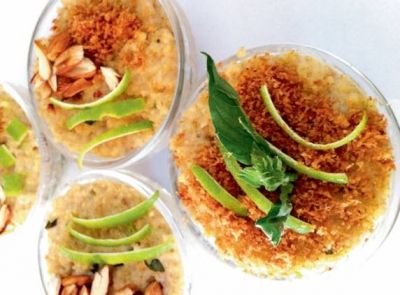
COCONUT LIME MILLET PUDDING
Wonderful natural dessert. Make with the option of millet or without. Millet tends to make it set, otherwise, it is runnier....but both delicious!
Ingredients
- 1 cup thick coconut milk
- 3 cups water
- 2 ripe sweet limes
- 2 cm piece of cinnamon
- 3 tsp sugar (or more)
- ½ cup millet (optional)
- Pinch of salt
- Handful of fresh mint or basil
- Grated coconut
- chopped Almonds (for garnish)
Instructions
- Lightly toast the millet on a dry pan for about 4 minutes. Move the millet to a saucepan and add the coconut milk, water, cinnamon, salt and sugar and simmer gently until the millet is cooked to the texture you desire, usually between 30-40 minutes. Stir the mixture occasionally, adding water if necessary. Add sugar to taste, some prefer a sweeter dessert. While the millet is cooking, zest and juice the limes. Toast the coconut and slivers of almond. Wash and chop the mint and/or basil. Cut the lime zest as finely as possible and about 15 minutes into cooking time, add most of it to the cooking millet. Reserve some lime for garnish. When the millet is soft, add the lime juice and continue cooking until you get a creamier texture. Turn off the heat. Take out the cinnamon. Stir in most of the fresh herbs. Pour millet pudding into individual serving bowls or one big one - garnish with almonds, coconut, zest and herbs and refrigerate for next morning's breakfast or eat immediately if you like it warm.
"I worried he'd hit me in the coconut, so I got into the habit of turning my back to the plate when we had runners on second and third."
Carlos Tosca
COCONUT OIL CAN CURE ALZHEIMER'S DISEASE?
Per the Alheimer's Association, there are over 5 million Americans afflicted with the memory loss disease known as Alzheimer's. This is the story of a lady who had a husband, 58 years old and diagnosed with the disease. His treatment programs with approved Alzheimer's drugs did not prove successful so she tried a natural remedy, taking dosages of coconut oil. This article shows that due to his miraculous response to the oil, it may be a useful cure for the dreaded Alzheimer's Disease. I am providing this Public Domain report, by a licensed Doctor but it is in no way should you try this without first consulting with your Doctor. This is only for information.
- POSSIBLE LINK TO CURING ALZHEIMER'S WITH COCONUT OIL MAY HAVE BEEN FOUND!
CLICK THIS LINK TO SEE IF COCONUT OIL MAY BE BENEFICIAL TO YOU!
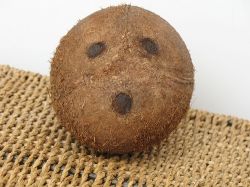
WHAT IS THE ORIGIN OF THE HEAD BEING CALLED A COCONUT?
The origin of the word coconut and it's use as a term for our head was coined by early Portuguese and Spanish explorers and has been around longer than you may think. The bottom of the shell of the coconut with it's three holes reminded them of a human face. Thus, it was named "coco", a Portuguese word for a face that is either grinning or grimacing. It wasn't until 1613 that it was adopted in the English language. Prior to the Portuguese and Spanish arrival, the Indians had called it only "nut" so the name was compounded into coconut.
Please let us know what you think!




